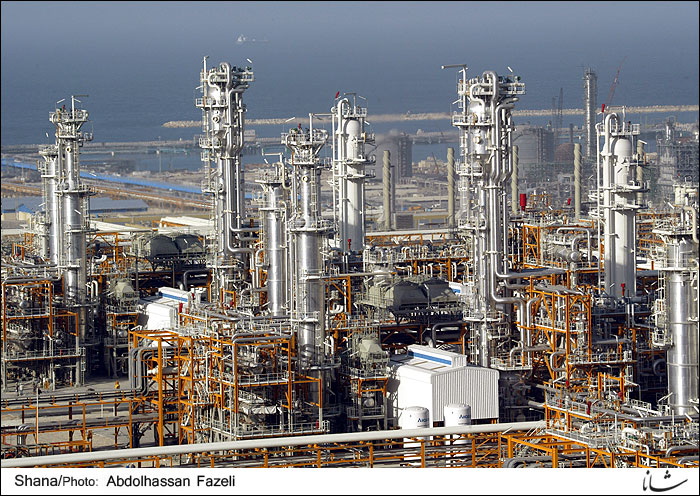The refineries will contribute to converting nearly 500,000 b/d of gas condensate to products of high economic value.
Director of economic development and investment attraction in Pars Special Energy Economic Zone Hojjatollah Fereidouni told Shana five financiers have got permit from Petroleum Ministry’s Directorate of Consolidated Planning. Three more potential investors are in the process of getting permit.
Fereidouni said the refineries will have a capacity of 10,000 to 150,000 b/d, adding: “With the construction of these eight refineries, such byproducts as gasoil, gasoline, naphtha and tar will be produced in different grades of 40, 50, 60 and 70.”
“After getting environmental impact assessment (EIA) permit by financiers, the contract for the construction of these refineries will be signed. These permits have to be taken into account in the design of the refineries,” he said.
“A large number of financiers had volunteered to construct gas condensate refineries. Finally, eight of them were picked. But in case the private sector is willing to investment in this or petrochemical sector, it can submit its documents to the Department for Economic Development and Investment Attraction in Pars Special Economic Energy Zone,” said Fereidouni.
Condensate Conversion
Fereidouni said mini-refineries are instrumental in converting gas condensate to the necessary oil products.
“With the construction of these refineries, the necessary feedstock will be supplied by South Pars gas field for domestic purposes and exporting such products as gasoline, gasoil, naphtha and petroleum. That will bring big revenues for the country,” he added.
“It is forecasted that nearly 500,000 b/d of condensate would be delivered for consumption in the gas condensate refineries through pipeline,” said Fereidouni.
8 Mini-Refineries in 3 Years
Fereidouni said 10 to 70 ha of land have been allotted to the private sector to build mini-refineries. “These lots of land are located in Pars Special Economic Energy Zone and they are exempt from customs formalities.”
Regarding the timeline for the construction of gas condensate refineries, the official stated: “Since there is not much experience in the construction of gas condensate mini-refineries and construction of these refineries is something new, designing these refineries is likely to last long, but based on the plan drafted by the private sector active in this project, work will start in six months and their construction will take two years.”
“Based on these forecasts, these eight refineries will become operational in three years,” he said.
Profitability
Fereidouni underscored the profitability of gas condensate mini-refineries in the country, saying: “Economic feasibility and profitability studies were conducted for the implementation of these projects. Three or five years after [the implementation of the projects], the total capital will be returned. The profitability of this project is above 35 percent.”
He said the private sector will finance these refineries. “To construct a 10,000-barrel refinery, nearly 1.05 trillion rials will be needed while a 150,000-barrel refinery will require nearly 15 trillion rials of investment. Potential investors will be introduced to the bank for receiving facilities from the National Development Fund.”
“Construction of the refinery until the stage of marketing, selling and exporting products is up to the private sector. They will be sold gas condensate at regular prices to power refineries,” said Fereidouni.
“The technology used for the construction of these refineries is fully domestic and it can rival the technical savvy used in the construction of big gas condensate refineries,” he added.
Iran’s Research Institute of Petroleum Industry has indigenized the technical savvy for designing oil and gas condensate refineries. The products supplied by Iranian refineries will conform to international standards.
The first basic designing of oil and gas condensate refinery was carried out in Kharg Petrochemical Plant for the propane, butane and naphtha units with the daily capacities of 500, 500 and 4,000 tons.
Basic design for the gasoil treatment unity of Tabriz refinery was done in 2010 with a capacity of 72,000 b/d.


Your Comment